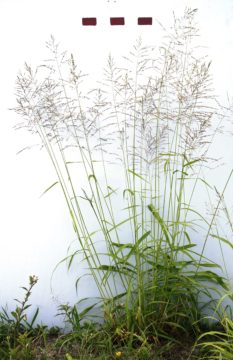Hannah Rachel Cole at JSTOR Daily:

Yet something strange happened in the history of this ostensibly symbiotic relationship. Although guinea grass was meant to support the sugar economy by feeding its beasts of burden, ironically, it became a virulent weed to the sugarcane plants. By 1977, guinea grass was rated the number one weed to sugarcane in Cuba. In 2012, the journal of the National Botanical Garden of Cuba (Revista del Jardín Botánico Nacional) listed it as one of the top 100 most noxious weeds on the island and an invasive species of greatest concern.
In this way, the two imported grasses became stalky antagonists in the daily competition for light, water, and soil nutrients. Their cultural meanings, however, had long since diverged. If sugarcane supported the economic interests of European planters, guinea grass was appropriated by enslaved and marooned Africans across the Caribbean for practical and religious purposes. Diasporic Africans in the Virgin Islands used the dried grass to make masquerade costumes for Carnival and other festivals.
more here.
